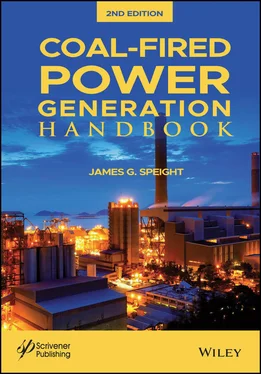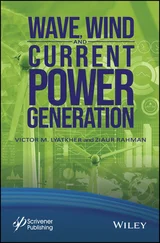Roman, G.H. 1967. Recovering Sulfur and Iron from Coal Pyrite. Coal Age . February. Page 107.
Ryan, B. 1992. Estimation of Coal Washability using Small Samples. J. Coal Quality. 11(1/2): 13-19.
Rosendale, L.W., DeVito, M.S., Conrad, V.B., and Meenan, G.F. 1993. The Effects of Coal Cleaning on Trace Element Concentration. Air and Waste Management Association, Annual Meeting, Denver, Colorado. June.
Schlesinger, L., and Muter, R.B. 1989. The Effect of Ultrasonic Conditioning on the Froth Flotation of Pittsburgh No. 8 Coal. Proceedings. Sixth Annual International Pittsburgh Coal Conference. University of Pittsburgh, Pittsburgh, Pennsylvania . Volume 2. Page 1163.
Skea, J.F., and Rubin, E.S. 1988. Optimization of Coal Beneficiation Plants for SO 2Emissions Control. Journal of the Air Pollution Control Association , 38: 1281-1288.
Sokolović, J., Stanojlović, R., and Marković, Z.S. 2006. Effect of oxidation on flotation and electro kinetic properties of coal. Journal of Mining and Metallurgy A: Mining , 42  1): 69-81. Speight, 1990
1): 69-81. Speight, 1990
Speight, J.G. 1990. Coal: Origin, Occurrence, and Recovery. In Fuel Science and Technology Handbook . J.G. Speight (Editor). Marcel Dekker Inc., New York. Chapter 17.
Speight, J.G. 2013. The Chemistry and Technology of Coal . 3 rdEdition. CRC Press, Taylor & Francis Group, Boca Raton, Florida.
Speight, J.G. 2020. Synthetic Fuels Handbook: Properties, Processes, and Performance . 2 ndEdition. McGraw-Hill, New York.
Trindade, S.C., Howard, J.B., Kolm, H.H., and Powers, G.J. 1974. Magnetic and Mossbauer Spectroscopic Characterization of Coal. Fuel . 53: 178.
Tumati, P.R., and DeVito, M.S. 1992. Trace Element Emissions from Coal Combustion – A Comparison of Baghouse and ESP Collection Efficiency. Proceedings. EPRI Conference on the Effect of Coal Quality on Power Plant Performance, San Diego, August.
Vassallo, A.M., Fraser, B., and Palmisano, A.J. 1990. Coal Washability Prediction by Infrared Spectroscopy and Principal Components Analysis. Journal of Coal Quality . 9(4): 105-109.
Weng, S., and Wang, J. 1992. Exploration on the mechanism of coal desulfurization Using Microwave Irradiation/Acid Washing Method. Fuel Processing Technology , 31(3): 233-240.
Wheelock, T.D. 1977. Coal Desulfurization: Chemical and Physical Methods . Symposium Series No. 64. American Chemical Society, Washington, DC.
Williams, D.G. 1981. In Coal Handbook . R.A. Meyers (editor). 2 Marcel Dekker Inc., New York. Chapter 6.
Wilver, P.J., and Brumbaugh, C.A. 1985. Thermal Drying of Low Rank Coals using the Fluid Bed Method. Proceedings of the 13th Biennial Lignite Symposium, Bismarck, North Dakota. May 21-23 .
4
Storage
4.1 Introduction
Coal storage in stockpiles is essential in ensuring continuous supply of feedstock for large capacity power units. In fact, it has been estimated that coal stockpiles at electric power plants in the United States in March 2012 (EIA, 2012) were approximately 196 million tons, almost 18% w/w above the level in March 2011 and above the five-year range. Coal stockpile levels typically decline during summer and winter months as power plants burn through stocks to meet seasonal peak electric demand for cooling and heating load, respectively. However, mild weather during the winter of 2011/2012 combined with decreasing natural gas prices decreased the demand for coal-fired electricity. There are disadvantages to storing large quantities of coal because of the characteristics of coal and important problems may emerge because of its long time storing in open areas.
By way of explanation, there are other forms of coal storage – while coal is typically stored in stockpiles, which are piles or storage locations for the bulk materials. More controlled stockpiles are used in many different areas and are formed using stackers to form piles along the length of a conveyor and reclaimers to retrieve coal when required for product loading. On the other hand, a coal bin or a coal bunker is a storage container for coal awaiting use or transportation. This can be either in domestic, commercial, or industrial premises, or on a ship or locomotive tender, or at a coal mine or processing plant. Domestic coal bunkers are associated with the use of coal in open fires or for solid-fuel central heating. Free-standing bunkers were commonly made of wood or concrete and are currently sold in materials including plastic or galvanized metal. Coal bins or bunkers could also be partly or fully underground. Coal bins formed part of industrial plants and were also used for coal storage on steam ships.
A stockpile (stockpiling machine, commonly referred to in this text as a stacker) is a bulk stockpiling machine that is used to stockpile coal either at the mine site before transportation or at the power plant before use. The stockpiling machines come in different shapes according to specific requirements and the function of the machine is to pile or stack the coal on to a stockpile for later reclamation and use – a reclaimer is generally used to reclaim or recover the stockpiled material. The stockpiling unit typically moves on a rail between stockpiles in a yard and usually has three directions of movement, depending on requirements (i) horizontally along the rail, (ii) vertically by raising or lowering the boom, sometime referred to as luffing , and (iii) slewing, which is rotation of the stacker around its central axis and may not always be a requirement.
Because of the tendency of coal to self-heat followed by spontaneous ignition and spontaneous combustion (Sloss, 2015), there are cautions that need to be observed and stockpiling (sometimes referred to as stacking) of coal has to be done consciously and by respecting basic rules and procedures. The storage site must be properly prepared in order to minimize the risk of fire. Several rules of thumb in coal storage can be enumerated: the coal should be stored in several small piles instead of a large one in order to prevent temperature buildup and facilitate the inspection; stockpiles should not be higher than 12 feet and should not contain more than 1,500 tons of coal; storage of coal with high content of moisture should be avoided. The storage volume and the storage time are parameters depending on safety and continuity of coal supply to the power plant. Since the coal stockpile acts as a buffer between the coal extraction unit and power plant the stockpile volume and storage time cannot be properly controlled.
Although stockpiling is generally done in open areas, there are also covered stockpile areas or completely closed coal silos. Storage of coal is an important part of coal handling systems at coal-fired power plants, particularly since the advent of the unit-train concept in transportation. With this in mind, coal storage is generally practiced in order to accomplish one, or a combination, of the following objectives: (i) to be ready for use in the power plant promptly, (ii) to facilitate blending in order to even out chemical and physical inconsistencies that exist in such a heterogeneous material and to produce a combustible feedstock that has the necessary uniform quality, and (iii) to store coal of preferential sizes where the demand is seasonal (Barkley, 1942; Berkowitz and Speight, 1973).
Читать дальше

 1): 69-81. Speight, 1990
1): 69-81. Speight, 1990










